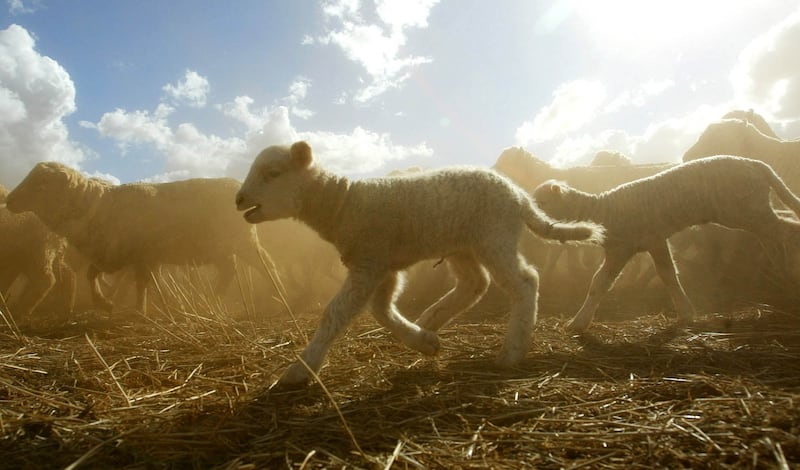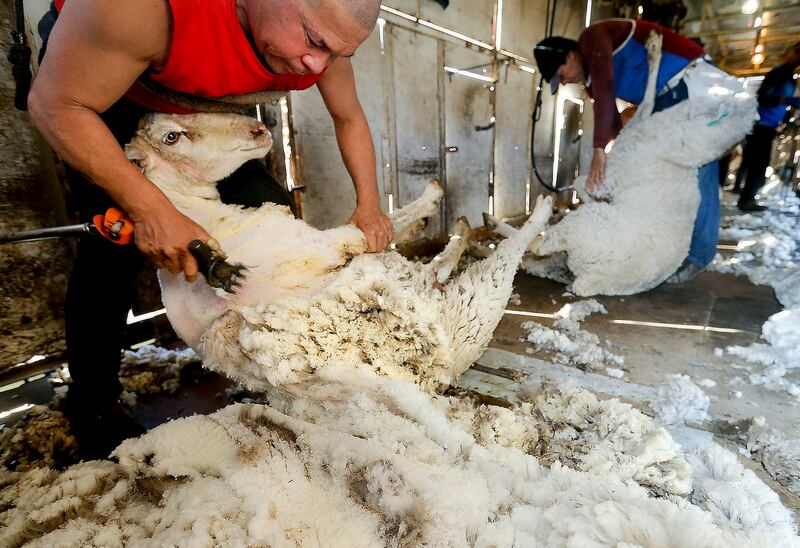A flood of lamb imports from Australia and New Zealand is slaughtering the U.S. sheep industry and Utah farmers are struggling to survive the onslaught, according to a pair of Utah representatives.
Reps. Celeste Maloy and Burgess Owens, both R-Utah, expressed their grave concern over what they assert is the looming and potentially catastrophic collapse of the U.S. market.
“Imports of lamb and mutton, that come primarily from Australia and New Zealand, have surged by more than 500% in volume and over 2,000% in value since 1994, following the elimination of the National Wool Act. In 2024 alone, the U.S. imported over 309 million pounds of lamb which is a nearly 30% increase from the prior year,” they wrote in a recent letter.

The pair are seeking action from Ambassador Jamieson Greer, the U.S. trade representative, and Amy Karpel, chair of the U.S. International Trade Commission, to immediately examine trade remedies that can restore fair market conditions for American sheep producers.
“Specifically, we respectfully request that your office negotiate or impose a Tariff Rate Quota on lamb meat imports from Australia and New Zealand,” Maloy and Owens wrote.
The two stressed that more than 70% of lamb consumed in the United States comes from foreign sources, while domestic production has dropped by more than 60%.
While Utah typically hovers among the top five U.S. producers of sheep, Owens said three decades of unfair trade, weak enforcement and the lamb imports are driving a steep decline.

“I’m calling for a Tariff Rate Quota on lamb imports from Australia and New Zealand, a smart, targeted step to restore fairness, defend American production, and give our ranching families a fighting chance to compete and thrive,” Owens said.
In October 2023, members of Congress urged action to open a safeguard investigation under Section 201 of the Trade Act of 1974 to address the issue.
“Unfortunately, the previous administration failed to act, and the challenges facing American sheep producers have only worsened. However, sheep producers in our state are now working collaboratively to submit a new Section 201 petition to the U.S. International Trade Commission. We respectfully urge you to give their petition full and fair consideration once it is filed,” their letter reads.
It continued: “We regularly hear from multigenerational sheep ranchers fighting every day to preserve their family farms and way of life. These producers are under mounting pressure such as soaring input costs, stagnant market prices, lack of access to risk management tools, persistent labor costs and shortages, and reduced access to federal grazing lands.”
Utah’s Commissioner of Agriculture and Food Kelly Pehrson said the industry faces tough problems.
“Utah is proud to be one of the nation’s top producers of lamb and wool, but our sheep producers continue to face serious challenges accessing fair markets. Supply chain bottlenecks, limited processing capacity and ongoing trade pressures make it difficult for producers to remain competitive,” he said. “Efforts to strengthen domestic or global market access and support this industry are welcome and urgently needed.”

More impacts related to trade
The pair added that global trade disruptions have had other negative effects on the industry.
“Historically, U.S. wool and sheepskins have been major value-added exports, but trade restrictions in key markets, particularly China, have severely impacted this sector. In 2024 alone, more than 80% of U.S. sheepskin exports and nearly four out of every five pounds of raw wool were destined for China,” they said.
Maloy added: “Utah’s sheep industry isn’t just a vital part of the state’s economy, it’s an important part of Utah’s culture.”
Will Griggs, manager of Utah Wool Marketing, said the state has some producers that are hanging on to five or six years’ worth of wool.
“It’s just not moving, or if it is, we are basically giving it away.”
Although there has been less wool carryover recently compared to several years ago at the onset of COVID-19, the market remains depressed, he said.
“We could definitely use a lift.”
There has been movement for markets in Uruguay and India, but it is a struggle, he added.
Griggs said the country’s largest scouring and combing mill for wool — based in Jamestown, South Carolina — is still down 80% in processing since COVID-19 hit.
Chargeurs Wool (USA) Inc. was established in 1955 and is housed within a 400,000-square-foot facility that sits on 500 acres of land.
“Whatever the U.S. military uses is scoured and combed there,” Griggs said.
Still, COVID-19 effects linger.
“People are not dressing up or going out and buying nice clothes, ” Griggs said.

